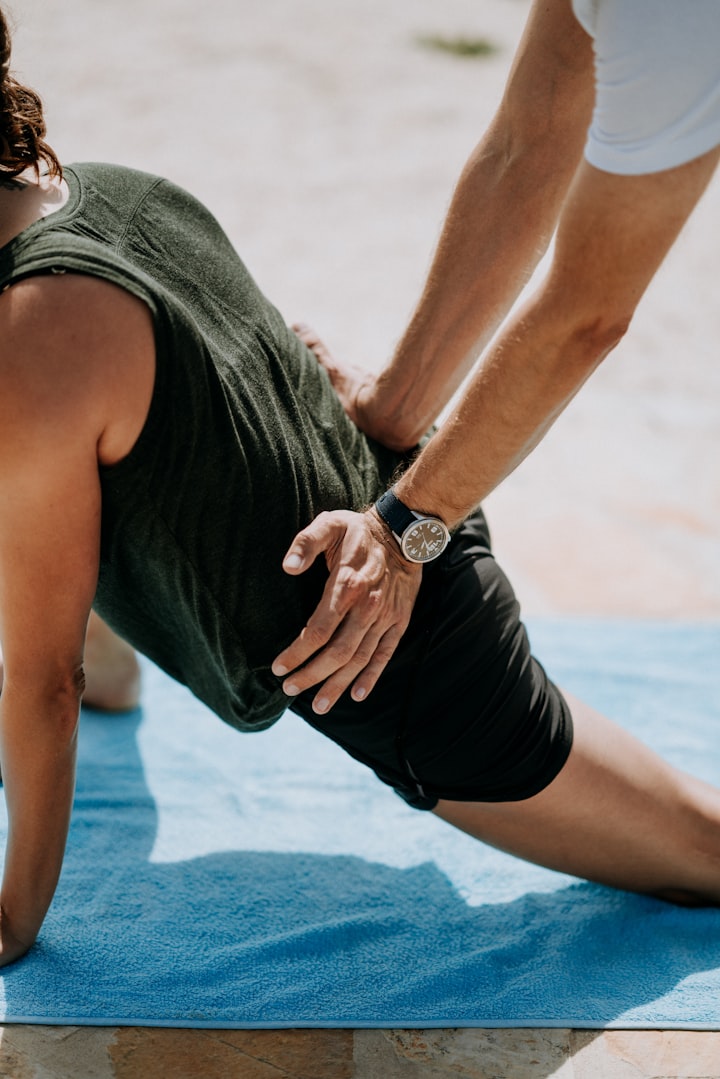How to be Pain-free by Improving Posture
Learn these 4 simple strategies to improve posture and manage pain.

Being aware of how to sit or stand properly can eliminate basic aches and pains experienced. Learning simple lifestyle changes and strategies can make a difference in avoiding the debilitating effects of poor posture and bad postural habits. Education and awareness can be a relevant step on your way to better spine health. Below are 4 Quick Tips for correcting posture.
The Nature of the Beast, that is Bad Posture
Poor posture is qualified as a repetitive stress injury affecting us, the homo sapiens species. It can easily lead to common symptoms that can escalate into more significant morbidities. Symptoms can include joint pains, muscle pains, stiffness, poor circulations, muscle spasms, and even poor respiration or breathing.
Tension headaches affect about 80-90% of the population. Back pain, on the other hand, afflicts about 80% of the population as well, at some point in life. These are just a few problems that can arise from poor postural habits.
What is Text Neck Syndrome?
The advent of mobile devices has caused a new affliction: A new affliction has emerged: Text neck syndrome.
Bad posture can be acquired from time spent on mobile devices. This likely leads to worse problems. Back pain affects 8 out of 10 Americans at certain stages in life. It is also a leading cause of disability worldwide.

Check this image above. You see this every day. Everyone owns a cellphone, and a vast majority stay attached to it.
A lady and Her Cellphone
This reminded me just a few weeks ago of this fragile little lady referred to us due to frequent falling. She has advanced-stage Parkinson's disease. She is about 85 years old and can walk only with a walker that has a seat. She has a very poor balance. She also exhibits the typical Parkinson's posture: forward neck, severe kyphosis,(humped upper spine), and she was bent over on her walker.
Separating this lady's attention away from her cellphone was one of the most arduous tasks I ever had to undertake on this very particular day. Just to be able to perform her initial assessment, I had to keep her walking. This was to have both her hands on her walker and not on her cellphone. She was so bent forward on her neck, shoulders hunched, that she barely reached my shoulders. Mind you, I am no towering amazon. That was how bad her posture was.
During the assessment, these were her complaints: muscle spasms in the neck, shoulder, and back pain. Why am I not surprised?
I tend to be lenient and understanding with my patients, especially the elderly. Working with teenagers and adults alike who just cannot let go of their cellphones during physical therapy sessions can prove very challenging at times.
It was new to me to witnessing an 85-year-old who clearly has an aberrant attachment to her cellphone. Her voracious obsession with this mobile device has clearly contributed to her current state. Bless her heart, I had to keep her hands busy just for me to be able to get through the therapeutic tasks.
Technology and the Younger Generation
Children as young as 2 years old know how to get Youtube on tablets and cellphones. I witnessed this phenomenon with my own eyes. One can just imagine how the next generation will fare from text neck syndrome.
My twin nieces, both two at that time, knew how to get to Youtube on their mother's tablet. To see them navigate the intricacies of the buttons to watch cartoons and the alphabet songs was a marvel to behold! Those two barely know their ABCs. You bet I had to congenially discuss child ergonomics and cartoon-watching rules with the mom, who happens to be my sister and is also a physical therapist.
Now both 5 years old, the twins have developed better habits having attended Pre-K (LOL) with the mom implementing rules.
How Bad Posture Causes Neck Pain

Try to picture this: You are carrying about 4.5 to 5 kg of weight (approximately 10 to 11 lbs. -the weight of our head) on the shoulders and neck every waking hour. You turn your neck side to side, up or down, or bend sideways. What is responsible for producing all these movements? Your muscles, of course.
The neck muscles, including the sternocleidomastoid and the trapezius, are responsible for the movement of the head and neck. They move the head in every direction, pulling the skull and jaw towards the shoulders, spine, and shoulder blades.
The orientation of the head closer to the shoulders is crucial to avoid excessive loading to these supporting muscles.
Biomechanically speaking, for every inch of forwarding deviation of the head, there is an equivalent additional load of about 15 to 30 pounds placed on these muscles.
Such a load basically doubles the weight of the head. It forces these muscles to contract and be in constant tension for prolonged periods throughout the day. Muscles can only contract for a specific period before fatigue sets in.
Muscle fatigue occurs when these muscles are subjected to abnormally high levels of forces required to stabilize the head. Poor posture, which shifts the head too far forward, can cause spasms and muscle cramps. This, in turn, can also cause compression within the cervical spine. Tension headaches, decreased blood flow to the brain, and other subsequent symptoms then follow.
Left unchecked, this can lead to more severe problems. Being mindful of how you carry your body throughout the day can make a big difference and improvement in health.
4 No-Brainer Tips for Better Posture
The simplest motion of bringing your head and neck backward more towards the middle immediately eliminates this excessive loading. Relaxation of the trapezius muscles (that muscle on both sides of your throat you tend to massage when tight) is almost instantly palpable.
1. IN STANDING. Stand with your back against a wall. Allow your butt, shoulder blades, and the end of your head to touch the wall. This is your ideal posture closest to the center of gravity.
- Walk away from the wall. This is how your spine alignment should be. Remember ladies walking with a book on their heads to assume a regal posture? That is ideal for good posture!
- Picture yourself in a position as close to this alignment as possible when standing.
2. WHEN SITTING. Sit straight and imagine looking at yourself from the side. Visualize a straight line from your ear down to your shoulder and hip. Your trunk and thigh have to be at a 90-degree angle (as an L-shape) when seated.
The leg and knee also have to be at a 90-degree angle as well. This ensures proper distribution of your weight in the chair, preventing abnormal stresses to the spine and joints.
3. WHEN WALKING. First and foremost, wear good walking shoes. Stick your chest out and square your shoulders. This allows your spine to directly be at the center of gravity.
Walk with a heel < > toe pattern. This means that when you walk, your heel strikes the ground first, the toes come next. Walking heel < > toe allows you stability in your gait.
4. WHEN SLEEPING. Whether you are a side sleeper or a back sleeper, you can always maintain good posture and wake up relaxed and pain-free. By placing a pillow in between your knees in the side-lying position, stress on your back is eliminated. You can also hug a pillow to ease the pressure on your shoulder.
When sleeping on your back, you may use a pillow to prop up your knees by placing it under. Keeping your knees bent takes out the stress on your lower spine.
Benefits of Good Posture
1. Improves the heart and lung functions.- By opening up your front chest wall by sitting or standing straight, lungs can expand better within the rib cage, allowing better oxygen intake.
2. Good posture is great for stress reduction. - When the body is better aligned within your center of gravity, there is less strain in muscles within opposite sides of the body.
3. Prevents sore joints, aches, and pains. - When muscles are not strained and joints are better aligned, there is no shearing on muscles and ligaments. There is also none of the unnecessary friction on joints from abnormal loading from poor posture.
4. Improves balance for better postural stability. - Good posture allows the body to have quicker responses and reflex righting to balance shifts.
5. Improves or restores proper walking patterns. - Good posture allows a person to have a more equal and symmetrical stride and step.
6. It makes one look better, confident. - Ever noticed people with good posture? They stand taller and appear confident, healthy, and strong. They move differently. They are more coordinated with their movements.
"...an ounce of prevention is always better than a pound of cure!"
Enjoy a pain-free day to all you hard workers out there! Hope this article guides you to better posture.
About the Creator
LOVENA SUSON
Lovena is a physical therapist, freelance writer and a blogger; has authored self-help books on Kindle and Audible. Writing is a passion, so is fixing broken bodies. Her projects include medical missions and fall prevention in the elderly.






Comments
There are no comments for this story
Be the first to respond and start the conversation.